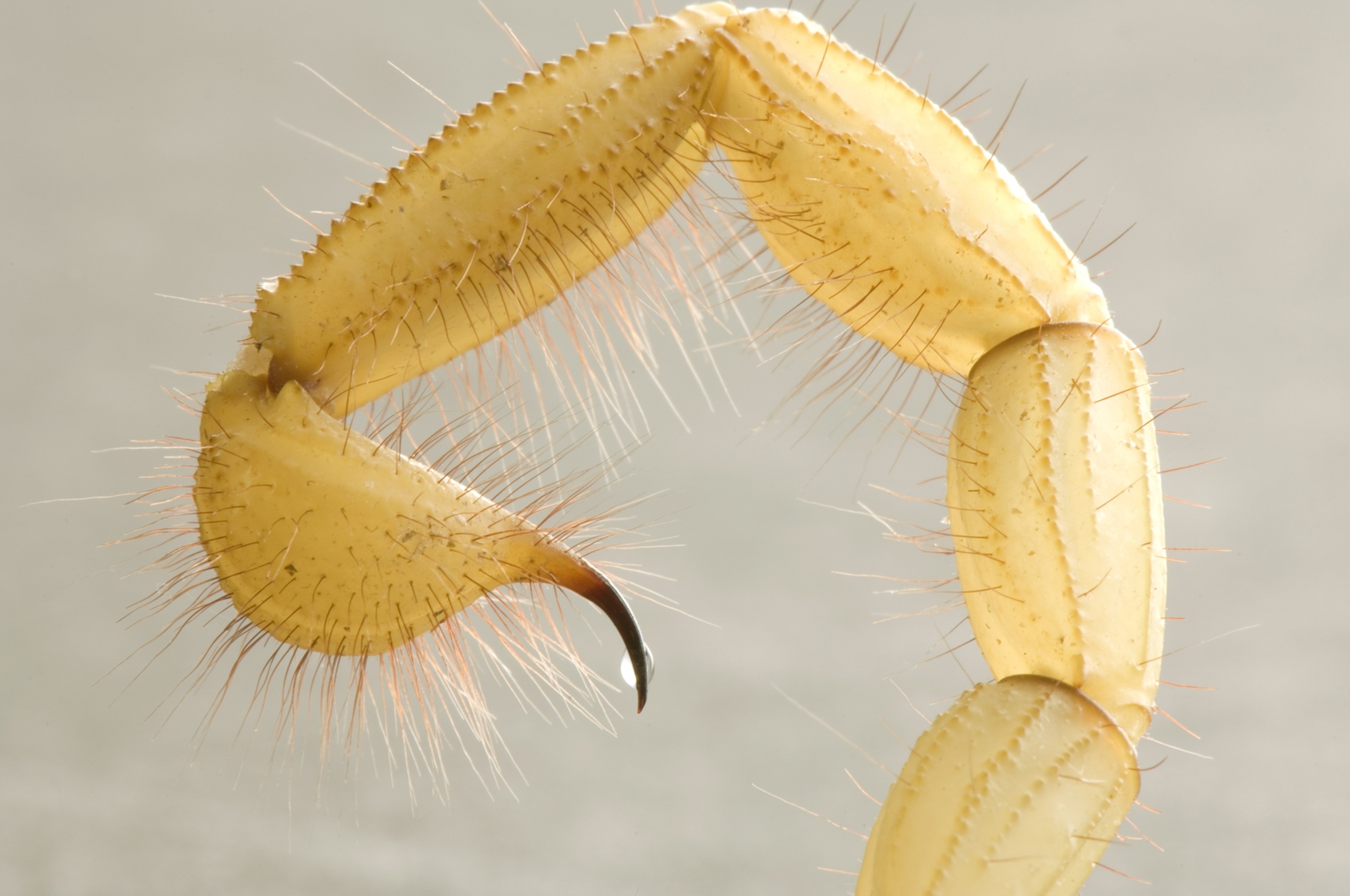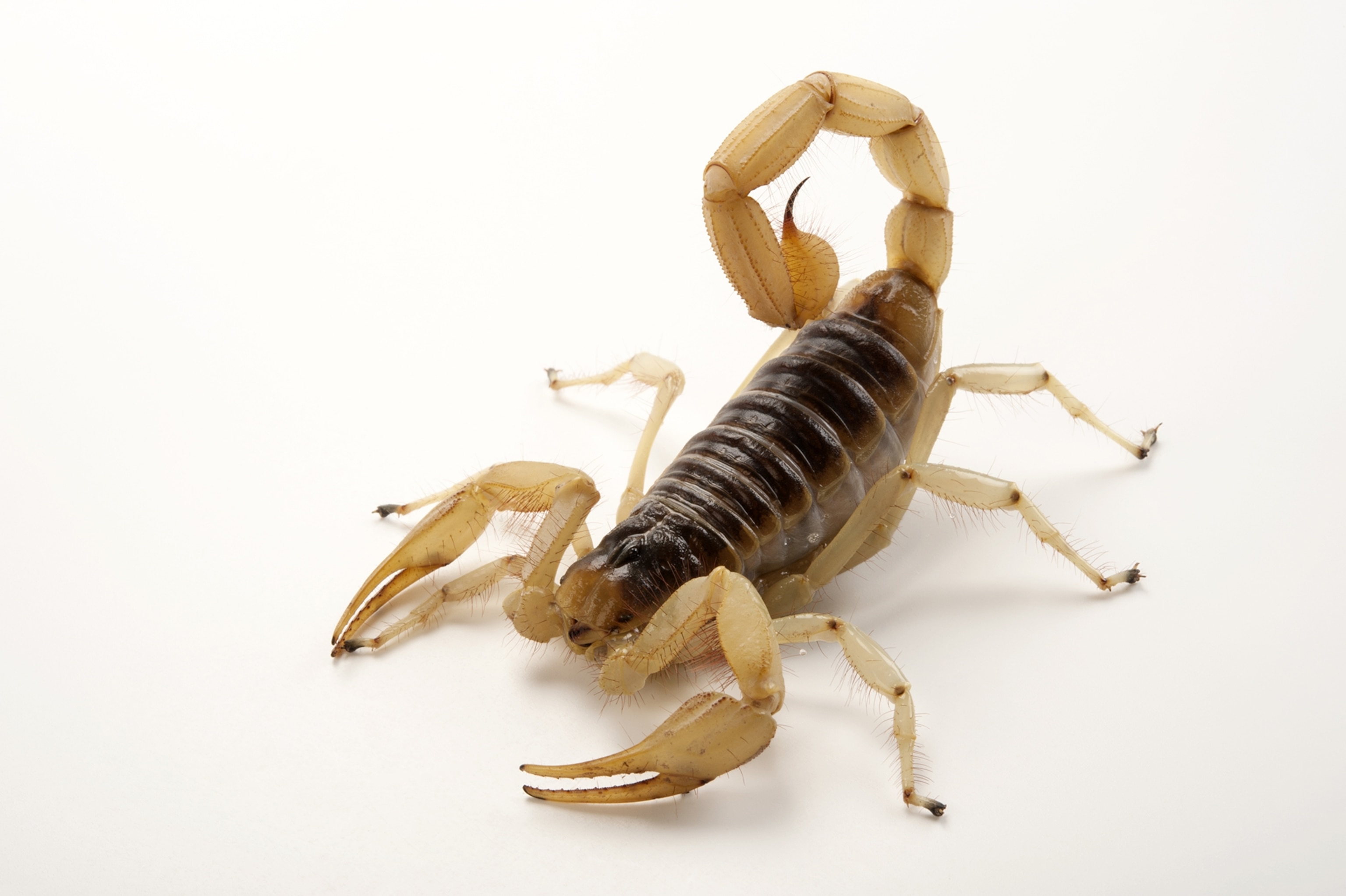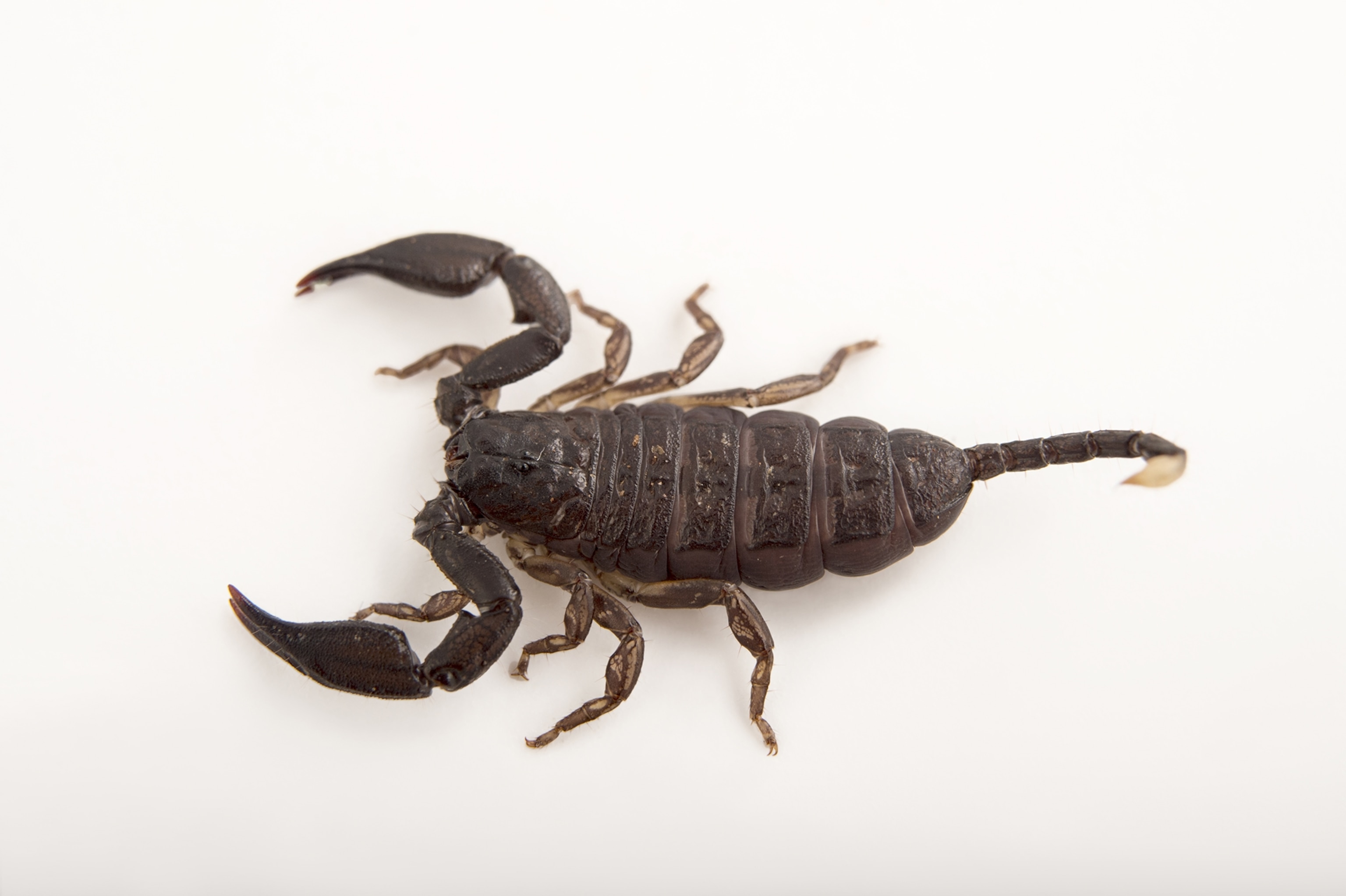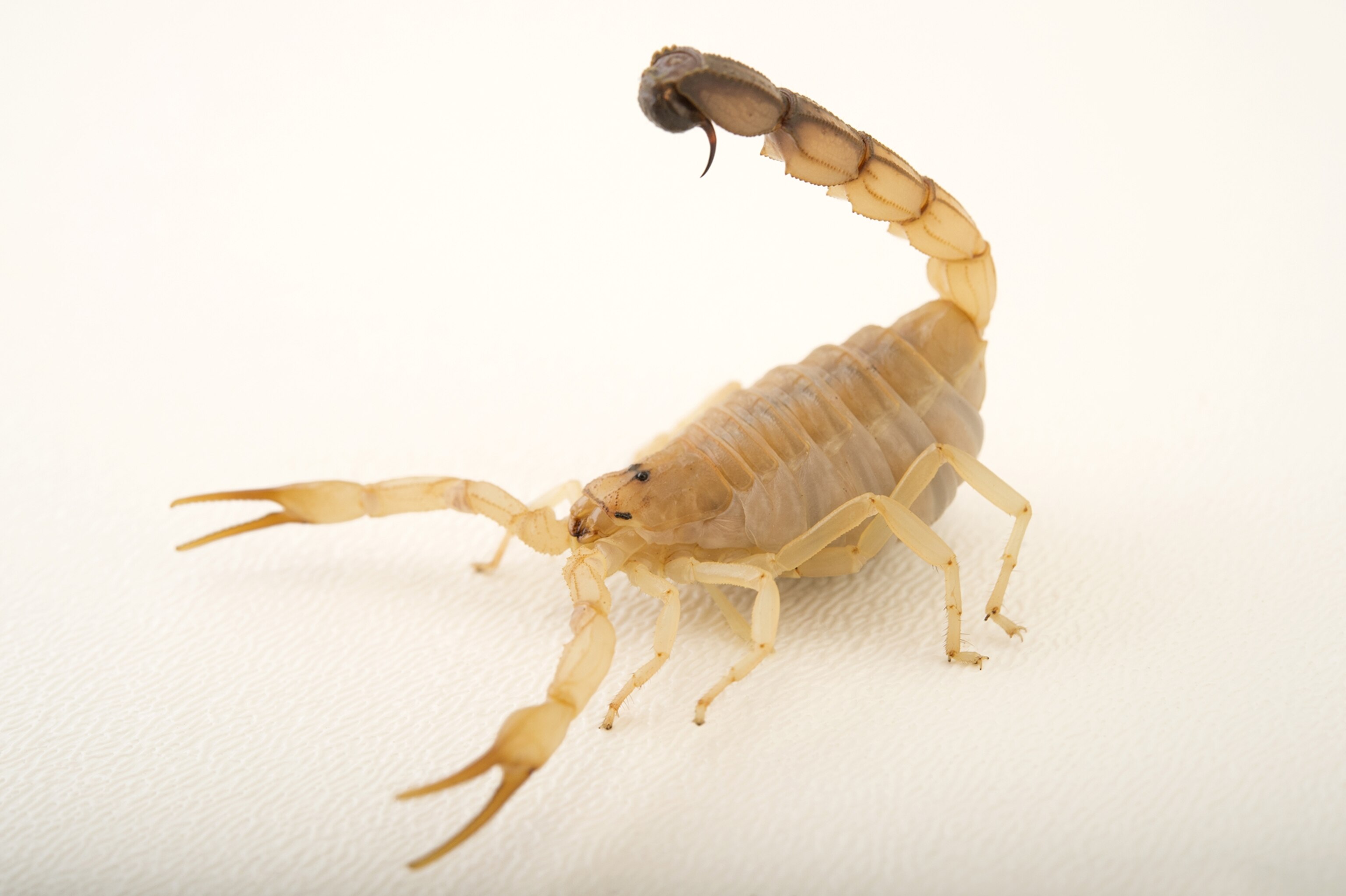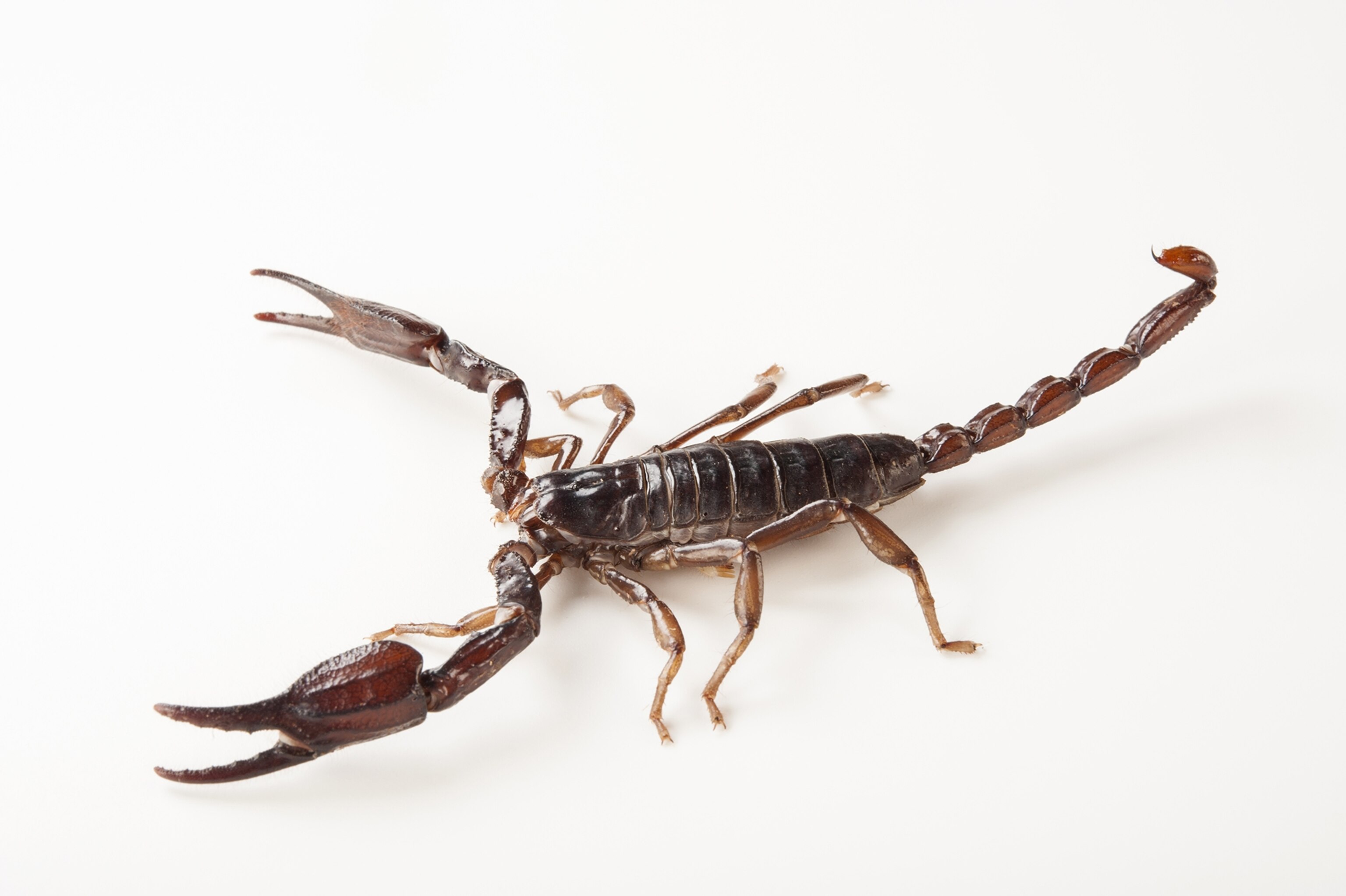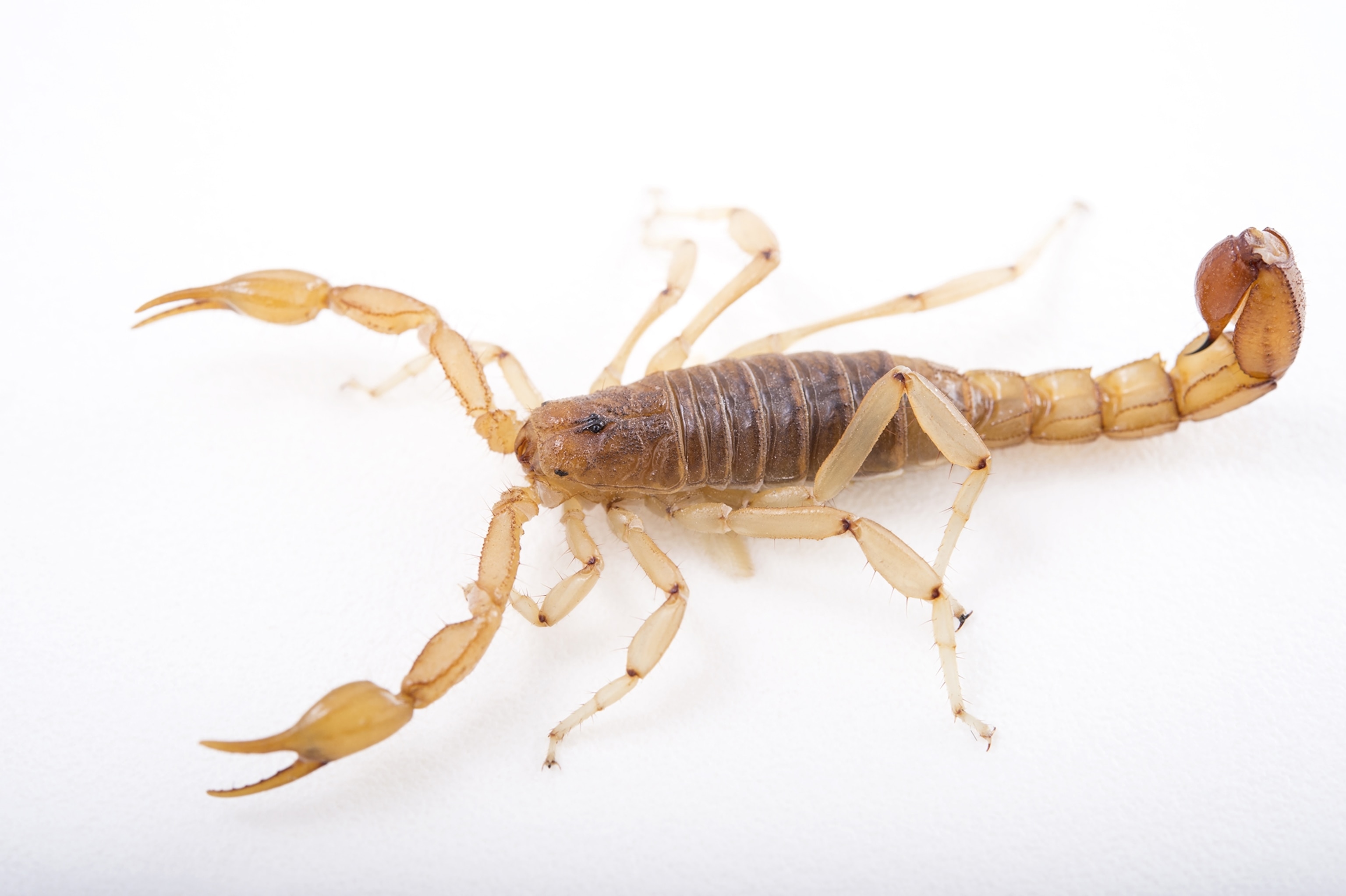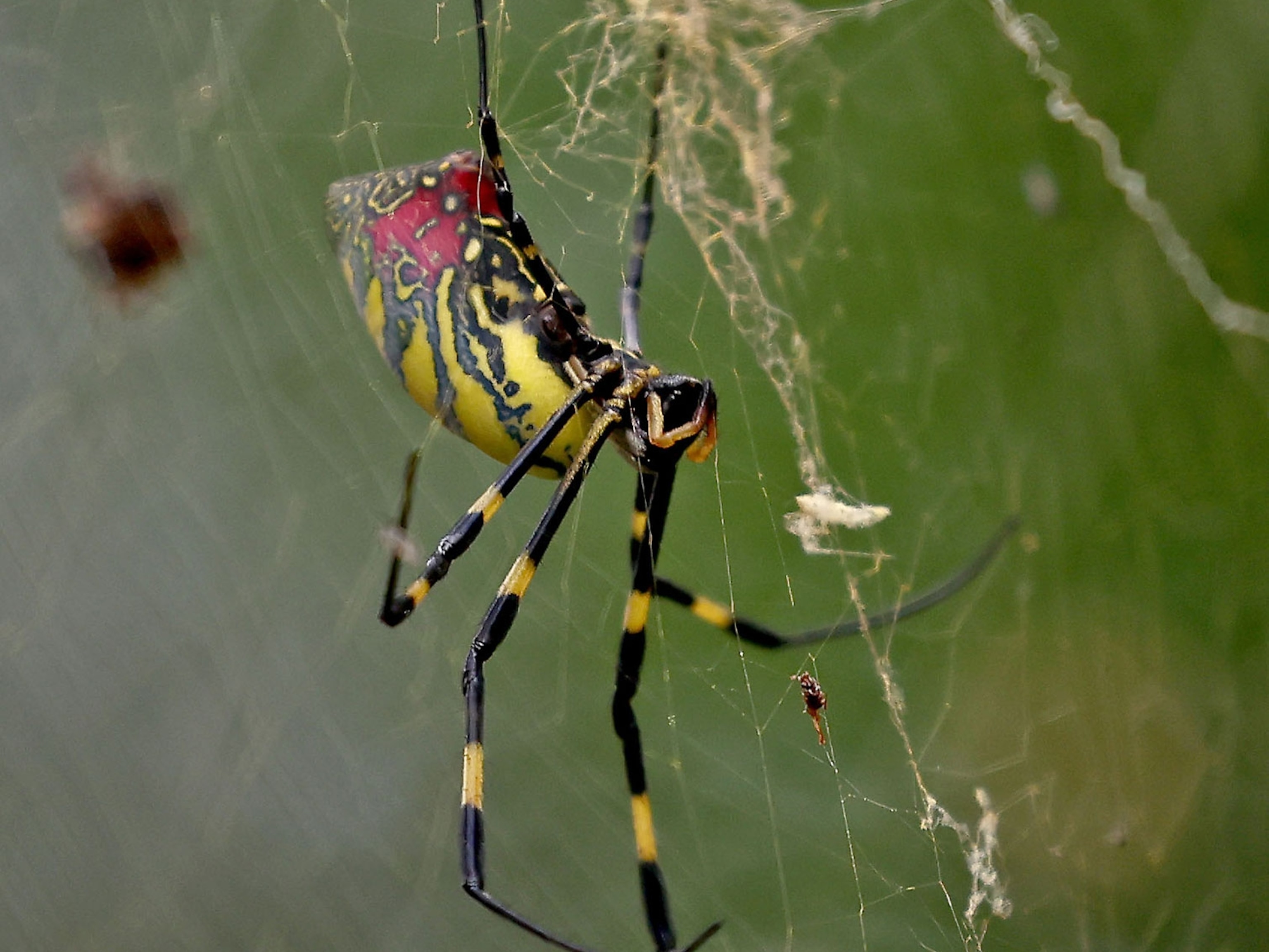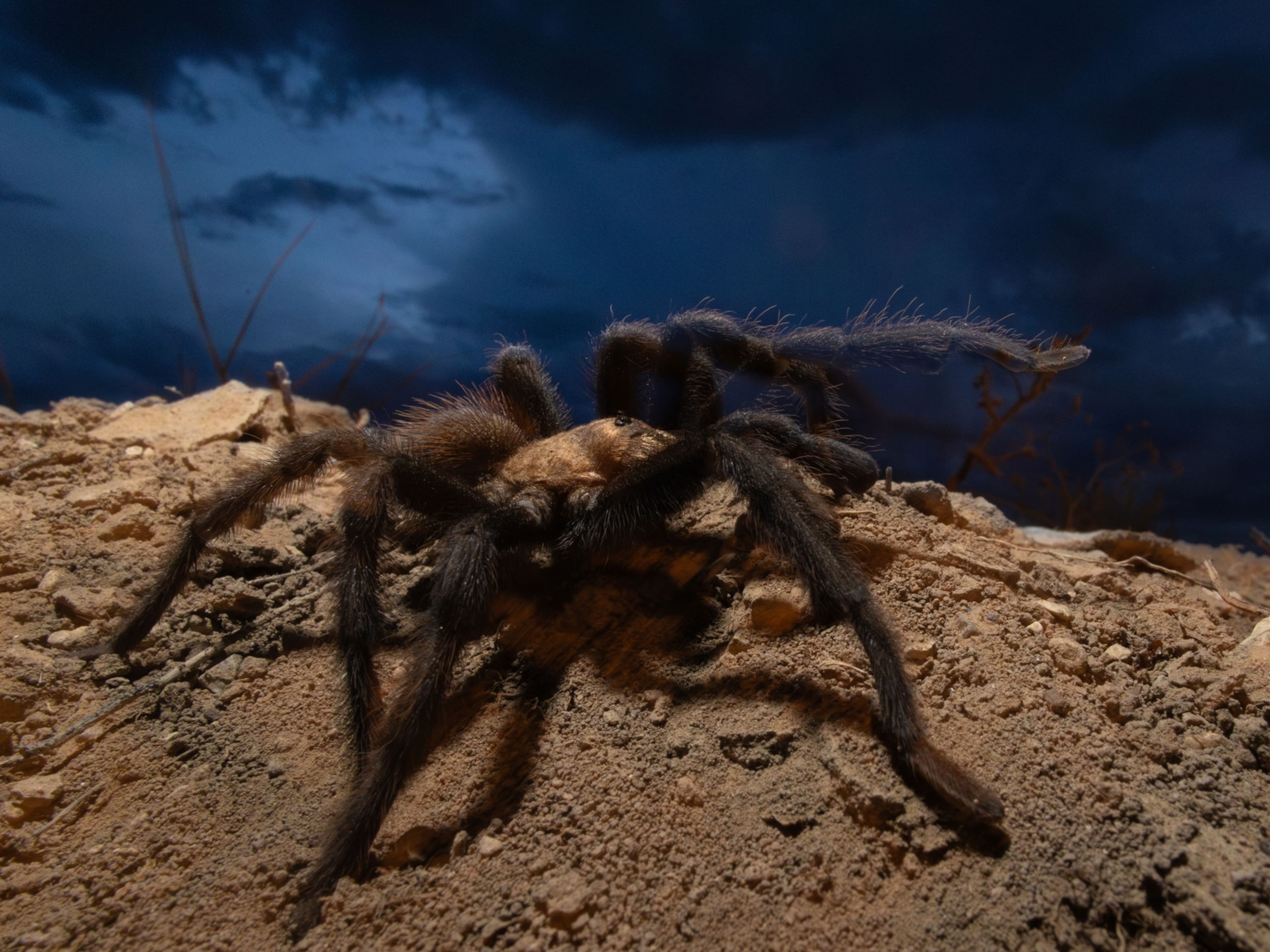Spider Catches Prey by Shooting Webs
The rare ability helps some spiders outwit larger prey.
Gnaphosids—better known as ground spiders—don't spin typical spider webs. Instead, they catch prey, even those much larger than themselves, by shooting sticky silk to immobilize them, according to a new study in the Journal of Experimental Biology.
This means the ground spiders can actively hunt for their prey, rather than waiting for their meals to get caught in a web.
Jonas Wolff, from Macquarie University in Australia, and a team of researchers became intrigued by ground spiders when observing their silk-producing glands: the ground spiders had fewer, but much larger, silk-producing glands compared to other web-spinning spider species.
Thanks to the large spigots, which allow the silk to be expelled, this means the ground spiders can eject dense layers of the gluey substance at high speeds towards potential victims.
To learn more about the Spider-man-like tactics, Wolff and the team put ground spiders into plastic containers with other larger spiders to observe how the spiders used silk to capture prey. While filming with a video camera from underneath, the team noted that in more than half of the observed cases, silk was used during the attacks to subdue the prey’s legs and mouth parts.
In other cases, the ground spiders didn’t use any silk, and instead, they grabbed their prey directly.
Still, most spiders tried a direct attack against the prey first, Wolff said, but the use of the sticky silk was still identified as a more efficient strategy for immobilizing the “extraordinarily large and hazardous” prey before handling it in order to reduce the risk of injury.
“Of all families within the Gnaphosoidea and allies, the Gnaphosidae are the most diverse and widespread, and their ecological success may be linked to their novel use of silk,” Wolff said.
Researchers also collected samples of the silk from inside the containers to analyze its unique strength.
The ground spiders’ silk, while extremely tough and stretchy, is less sticky than other silks, researchers concluded. The glue coating the thread is still notably strong though, withstanding shear stresses that are more than 750 times the stresses that artificial glues can endure.
The Spider-man-like silk have some drawbacks, however.
Researchers noted that, due to the enlarged glands, the ground spiders are unable to spin the dense piriform silk disks used by web-spinning spiders to anchor webs. When gnaphosids make silk shelters, this means they can be easily removed and torn apart.
“This is a textbook example of a trade-off, where a highly efficient prey capture mechanism has evolved at the cost of reduced thread attachment, which is a basic function in all spiders,” Wolff said.
Although Wolff and other researchers also thought the enlarged spigots that expel silk could get clogged, they noticed that the spinnerets possess a unique anti-clogging mechanism, remaining closed until just before silk is ejected.
Follow Casey Smith on Twitter.

